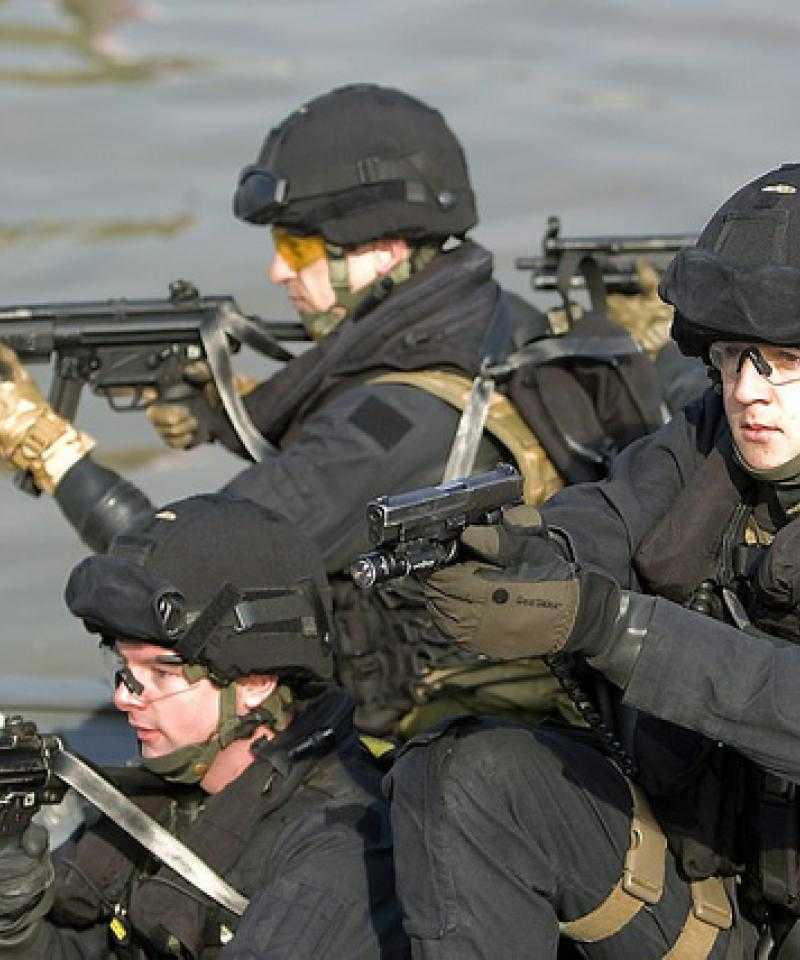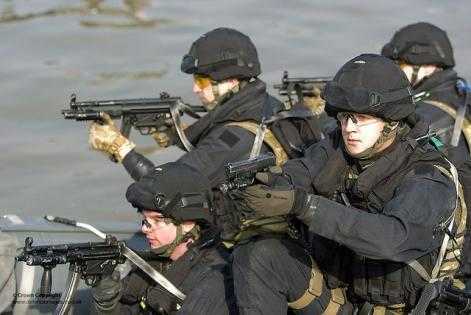Is UK Policing Becoming More Like the Military?

The recent wave of opposition to police violence in the US under the banner of #BlackLivesMatter has alerted the world to the disturbing use of lethal force by several US police forces against Black communities. Yet looking closely at some trends in UK policing indicate the British public should not be complacent about its own situation.
The concept of “policing by consent” has long held a special place in the public discourse around policing in the UK. Devised by the first Metropolitan Police Commissioners (the head of London’s police force) in the early 19th century, the key prescriptions of “policing by consent” are the minimum use of force, the recognition that police power is derived from the public’s approval, and the idea that the police rely on “willing cooperation”.
But are these principles anything more than a nice idea? At least in part, they were invented to win over a public who were suspicious and alarmed at the government’s efforts to establish the Metropolitan police in the first place. A commonly held view at the time was that police forces should be under local control, rather than the control of the national government. This is one of the reasons that to this day, the UK doesn’t have a national police force unlike many other countries.
But the UK’s Black and migrant communities have always suffered disproportionately heavy policing, so “policing by consent” has never been universal, if it ever existed at all. In fact, there is a long and shameful history of the use of lethal force by the UK’s police officers – and a lack of basic accountability for the families of the victims. Recent developments in the normalisation of the use of weaponry and a blurring of the boundary between the military and policing all provide further cause for concern.
Weaponry
The controversial purchase of three water cannon in 2014 raised public concern that the ideal of an unarmed police force was under threat. The potential use of this type of weaponry, coupled with the rolling back of freedoms to protest and assemble, raise serious questions about the capacity of British citizens to exercise their democratic freedoms. Earlier this month the Home Secretary appeared to waver on the issue, when she announced that the use of the water cannon would not be approved until after the UK’s general election in May.
Perhaps even more worrying is the routine use of Tasers (electroshock weapons manufactured by a company called Taser international). First introduced for use by specialist officers, Tasers are now deployed to ordinary rank-and-file officers. Although billed as “less-lethal”, Amnesty reports that in the US, over 500 deaths have occurred after shocks with Tasers either during arrest or while in jail since 2001. In the UK, individual cases of Taser use have sharply increased in recent years and now number thousands every year. Figures emerged recently showing that Tasers were used disproportionately on Black communities in London, and that children as young as 11 were being subjected to Tasers. The Home Secretary has called for a review of their use.
The long arm of the law
Yet these recent public debates over new weaponry should not distract us from the troubling long history of force, sometimes lethal, used by UK police forces.
UK firearms policy is rare among police forces globally, in that officers are not “routinely” armed. However, firearms units do exist to support individual forces. Part of their role is to respond reactively to incidents involving weapons. But firearms units are also used “pro-actively” within drug, firearms or counterterrorism policing operations. These “pro-active” operations draw heavily from the military handbook, using dawn raids, and relying on intelligence gathering procedures that are exempt from public scrutiny as they are kept secret in ensuing court processes. Another particularly contentious tactic used by firearms units is the ‘hard stop’: armed, plain clothes officers in police vehicles intercept another vehicle to confront suspects using extreme physical aggression designed to ‘shock and awe’ subjects into submission.
The tragic deaths of Azelle Rodney in 2005 and Mark Duggan in 2011 at the hands of firearms officers following two of these pre-planned ‘hard stop’ operations demonstrated a number of similarities. Through the inquest and Inquiry processes, it has been established that there was insufficient planning, limited intelligence, and someone shot dead who did not pose an immediate threat and was not holding any weapon. Other deaths by police shooting that didn’t involve a hard stop, such as Anthony Grainger in 2012, Jean Charles de Menezes in 2005 and Harry Stanley in 1999 also demonstrate the tragic consequences of combining lethal force with stereotype, conjecture, and limited intelligence.
The police marksman who shot Azelle Rodney eight times in the head and body now faces a murder charge. However, the tragedies that result from the use of lethal police force do not, in general, attract criminal prosecutions even on the rare occasions that inquests return a verdict of “unlawful killing”. In fact, there has not been a successful homicide prosecution of a police officer for any death in custody for 30 years. Vital legal routes to challenge these policing tactics remain largely out of reach for the families and for the public at large.
Counterterrorism: the battlefield comes home
It is especially clear how blurred policing and the military have become in the realm of counterterrorism. Controversy over the way in which these operations were being directed first came to the fore after the death of Brazilian electrician Jean Charles de Menezes, shot dead on his way to work on a tube carriage by officers carrying out a botched counterterrorism operation in the wake of the London 7/7 bombings in 2005. It later emerged that there had been a series of failings in communication and strategy within the policing operation. At least part of the confusion stemmed from the “Kratos” policy – a set of counterterrorism protocols that had been developed after 9/11 after consultation with a range of national police forces including that of Israel and Sri Lanka.
What shocked many people in the aftermath was that the Kratos policy recommended multiple shots to the head: de Menezes was shot in the head seven times. What was less remarked upon was that the usual legal justification for the use of force was undermined by the new protocol. Conventional non-Kratos firearms guidance dictates that officers must only fire when there is an immediate threat, and that this legal test applies to each individual shot. In its place, Kratos substituted a command structure based on an assumption that a commanding officer would have access to intelligence that officers on the ground would not – raising the possibility that effectively, officers could be given orders to shoot to kill, although officials have never admitted that Kratos amounted to this.
More recently, counterterrorism initiatives have invited the involvement of the military itself in policing. Following the Charlie Hebdo and killings in the Jewish supermarket in Paris, Special Air Service (SAS, part of the British Army) units, after being deployed in Iraq, Afghanistan and Libya, were deployed to the streets of the UK to work with police in the biggest domestic military deployment since the London 2012 Olympics. The SAS is reportedly also working alongside “Humint” units – covert intelligence gatherers used in Afghanistan and Iraq, now deployed in UK cities. It’s difficult to see how these operations can be held to account at all; there is barely any information in the public domain about these covert units or the SAS.
An urgent debate
The spectacle of Special Forces on the streets of Paris in the wake of the January killings is something that in another time would have been considered shocking – it was barely remarked upon by commentators. Does this reflect a tacit acceptance of the blurring between the military and the police? An atmosphere of generalised fear appears to be bolstering the position of those who argue that a more militarised police force is the only way to keep the public safe: in January, the threat of similar attacks in the UK was used as a justification to maintain 25 firearms officers in Manchester, which were due to be retired.
But it is on exactly these occasions, when the state comes to view its own citizens as the “enemy within” that questioning the use of force within policing is even more vital. Taken together, these trends towards the militarisation of policing necessitate a much wider and urgent debate.

Add new comment